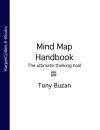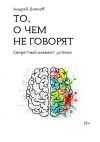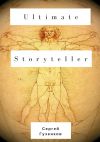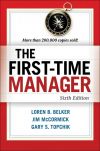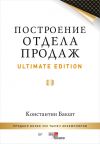Правообладателям!
Представленный фрагмент книги размещен по согласованию с распространителем легального контента ООО "ЛитРес" (не более 20% исходного текста). Если вы считаете, что размещение материала нарушает ваши или чьи-либо права, то сообщите нам об этом.Читателям!
Оплатили, но не знаете что делать дальше?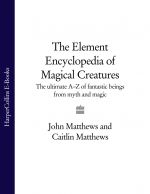
Текст бизнес-книги "The Element Encyclopedia of Magical Creatures: The Ultimate A–Z of Fantastic Beings from Myth and Magic"
Автор книги: John Matthews
Раздел: Жанр неизвестен
Текущая страница: 1 (всего у книги 7 страниц)
The Element Encyclopedia of Magical Creatures
John & Caitlín Matthews
the ultimate a—z of fantastic beings from myth and magic

Dedication
This book is dedicated to the loving, wise and magical Dwina Murphy-Gibb
Table of Contents
Cover Page
Title Page
Dedication
Foreword
Introduction
A
B
C
D
E
F
G
H
I
J
K
L
M
N
O
P
Q
R
S
T
U
V
W
X
Y
Z
Bibliography
Index
Discover an Incredible World Full of Every Magical Creature You Could Possibly Imagine…
About the Author
Copyright
About the Publisher
Foreword
The City of Gargoyles
We live in a city of gargoyles and fabulous beasts. Extraordinary creatures of all kinds cavort, peer and grapple on most of the walls wherever we walk around Oxford. We are daily familiar with the griffin, the cockatrice, the winged lion and many other magical creatures who guard the buildings of our city.
When we began this book, we were explorers who had yet to see their first phoenix, but we were astonished at the abundance of magical creatures and the worldwide similarities in the stories and themes that make animals and other beings kin to us all. We did not take a microscope or any dissecting tools with us, nor did we wear the sceptic’s sharp-angled spectacles that make all objects under observation appear warped and foolish. Indeed, we did not start out to set ourselves up as any kind of experts. It has been love of all living things that has kept us on the road and helped us travel safely on the compass-point pathways that lead from north to south and from east to west. Some creatures showed themselves to us very generously, others were shy and retiring, and so we had to listen to what other people had reported about them. We hope that such second-hand sources do not amount to idle or damaging gossip, and that the creatures in question may retain their secret habitat free from molestation.
As you set out in these pages, we urge you to wander at will, rather than to read from A–Z. The magical creatures themselves will lead you to find the hidden country that is your unique imagination. We also believe that there are creatures we have not described because they have yet to come into being. As long as the land of imagination is allowed to remain, with such a rich source of fodder, extinction is not an option.
Of course, no book of this extent could be done without the help of all the students of mythical creatures who have gone before. We would like to acknowledge those who made our own researches easier, especially Jan Knappert, Carol Rose and J.C. Cooper, whose wonderfully rich works inspired us to hunt still further. Thanks also go to Emrys Matthews for help with the appearance of various creatures, especially the Vampire, Werewolf and Zombie, in the media, where so many of these have found a new home.
John & Caitlín Matthews
Oxford, 10 March 2005
Introduction
The Zoology of the Imagination
‘The zoology of our dreams is far poorer than the zoology of the Maker.’
Jorge Luis Borges,
The Book of Imaginary Beings.
Here are creatures of every possible kind. Creatures that hold up the world; creatures that destroy the world; creatures who are one half human, one half animal and sometimes even part god. Here are animals we think we know, but whose natures are magical; creatures who have strange characteristics such as faces in the middle of their bodies, animal heads, forelegs and back legs of different species. Here also are creatures that follow us, padding silently through the night; creatures that prey upon us, from the fearsome and terrible fire-breathing dragon, to the body of water that has a mind of its own and will leap up and chase you before gobbling you up. All are the product – in one form or another – of human imagination, from a time before thought was organized into word and word into text.
Curiously, it seems we have come full circle, since in our own time imagination responds more to visual stimuli rather than to ancient tales, and we are by no means bereft of creatures that enthral, scare and astonish us with their wonder. Film and TV are, for many of us, the first and most immediate source of myth and folktale – from the classic stop-frame animation of Ray Harryhausen, who gave us Medusa and Pegasus in Jason and the Argonauts, to Steven Spielberg’s Jurassic Park, with its credible dinosaurs, we have gained an appetite for ever more wondrous creatures. Whether we think of the computer-animated adventures of the ogre Shrek, or the mythic creatures conjured up, and sometimes ridden, by Harry Potter and his friends at Hogwarts Academy, we are not content simply to accommodate the creatures we have known from the past – we want more. The cinema has not been slow to satisfy this appetite and to stretch our imagination even further. George Lucas has given us a veritable menagerie of new species in his Star Wars universe – from Wookies to Bantha, from Rancor to Hutt. In addition, a legion of movies and TV shows such as Buffy the Vampire Slayer, Angel and Ultraviolet, numerous versions of Dracula and the Blade trilogy, have kept the history of Vampires and Werewolves fresh and alive in our dreams. These clearly demonstrate that we have not seen the last of the creatures that are to enter into creation.
The naming of animals is a primal task, one that God, in the Christian myth, gave to Adam in the Garden of Eden. Naming is a means of understanding more about an animal, for the name denotes the nature. Our collection is a wonderful menagerie where names have been arranged in alphabetical order for ease of consultation, but we urge you to read where your imagination prompts you, as it pleases you to explore, to learn more about Kkuuxuginaagits, the Ganiagwaidhegowa or the wonderfully onomatopoeic Toatoatavaya-o.
This book is a zoology of the imagination more than it is a natural history. It follows the myths of magical creatures wherever they show themselves, myths that are primal stories encoding understandings that we grasp by means of metaphor rather than with any literal-mindedness. Where will these creatures lead us?
The Supernaturals
Magical creatures and fabulous animals form part of the order of nature that we can call the supernaturals. The place of their existence is not in the physical world, but in the otherworldly realms that surround and permeate our own world. Because the Otherworld and our own everyday world overlap at different points, where time and place interface with timeless space, these are the points where we encounter its inhabitants. For example, the unicorn does not just live in times past because the stories we tell about it seem fabulous, it has its own timeless existence in the Otherworld. It can cross out of that realm and appear when it chooses and to whom it chooses.
Those who go in pursuit of the supernaturals must be prepared to follow them into other dimensions. It is only time and placebound folk who deny their existence, because they have lost the flexibility and sense of adventure to go in quest of them. These otherworldly dimensions and the coordinates of transfer between realms have become less known and frequented in an age that is becoming sealed into one side of reality. This reserve or scepticism about other realms is not a problem that has arisen just in our time, as Shakespeare shows in Henry IV, where Hotspur rants about Glendower’s arcane beliefs:
’…sometimes he angers me
With telling me of the moldwarp and the ant,
Of the dreamer Merlin and his prophecies, And of a dragon, and a finless fish, A clip-wing’d griffin, and a moulten raven, A couching lion, and ramping cat, And such a deal of skimble-shamble stuff As puts me from my faith.’
Around us are many such muggles as Hotspur who are content to inhabit mundane reality, just as in the world of Harry Potter, where magicians are distinct from nonmagicians. But we do not have to become magicians in order to explore the world of the supernaturals, though it does help to have a flexible imagination that is prepared to follow dreams, listen to traveller’s tales and explore the ways in which we can encounter these magical creatures for ourselves. If we are prepared to loiter on the borders of the worlds, we will find what we had never imagined as well as some of the things that we did.
Evolution and Memory
According to Darwinian theories of evolution, it is logical to consider animals as the forerunners of human life, to see all creatures as part of a huge family tree of living beings. Such scientific theories are seen as being at odds with the traditional stories and myths told about the creating creatures who take an active part in the formation of life, but the mythic imagination allows intelligence and wisdom to animals in ways that science discounts or ignores.
Darwin’s evolutionary pronouncements encouraged people to see themselves as descendants of a long tree of life, but when he made his discoveries public in the 19th century some people were astounded and distressed to find that they might have ape forebears, or that they might themselves be ‘monkey’s uncles’. In our own time, in 21st-century USA, the gap between received scientific history and religious tradition still jars the pedestrian foot on the pavement of scientific progress. In that country, and elsewhere, some fundamentalist Christians doggedly deny the Darwinian theory of evolution of our descent through a chain of creatures, and continue to assert that human beings are the result of nothing less than a direct and discrete creation by God. What they make of the discovery of early hominids and other fossils is unknown to us, but this must be highly inconvenient evidence to such believers at the very least. (See ‘Epilogue’, page 645.)
Natural historians tell us that our bodies bear the mark of our animal origins from the serpentine scales of our skins, the bovine horn of our nails and the animal hair that grows on our bodies, among a variety of other physiological and cellular similarities. But the link between people and animals is not merely an evolutionary connection. It is a fundamental mythic understanding that is shared by traditional societies: we are part of a sacred continuum of life that cannot be severed without supreme loss of meaning.
In traditional reckoning, the passing of time is frequently marked by the listing of a sequence of living beings, including a succession of animals. A traditional Irish reckoning of lifetimes, goes like this:
‘Three fields to a tree
Three trees to a hound
Three hounds to a horse
Three horses to a human being
Three human beings to a deer
Three deer to an eagle
Three eagles to a salmon
Three salmon to a yew
Three yews to an age of the world.’
This is not a measure of literal commensuration but a measurement of myth and memory. What is so salutary in this particular list is that human beings are located between horses and deer in mythic longevity.
The Shape of Story
In every culture throughout the world, there is a rich vein of animal myths and stories that are related to the primal beginnings of the world. These cycles of stories are often the very first stories ever told. In them, the wisdom and lore of the first animal beings relate how human beings should behave, revealing how things were first instituted. We see such animal story cycles from the unbroken oral traditions that pass through the classical, medieval and renaissance times, from the fables of Aesop to the animal stories of Rudyard Kipling’s Jungle Book and Just So stories. Buddha used the Jataka animal tales to teach people about right behaviour. In these stories, it is the animals that are in charge.
The animals of such stories are not domesticated, tamed or subdued to the will of humans, nor are they anthropomorphized animals or storybook characters whose actions mimic humans. They are wise beings in their own right whose words and actions cause the world to come into being. They are almighty, omniscient and full of wisdom. Some are tricksters, like Coyote or Raven, who both involve themselves in the laying down of laws for humans and whose lateral thinking discovers useful tools for living such as fire or agriculture. They are guardians for those times when humans overstep the respectful mark whereby all living creatures can be threatened by destruction or they are animals who partake of humanity in some way, like the Centaurs who are the teachers of humanity, bringing music, art and other essential skills.
We live in a time where we most urgently need the wisdom of the animals and creating creatures. Although Darwinian theories of evolution have told us that human beings are the summit of the evolutionary ladder, at the top of the food chain, we need the salutary wisdom of the animals to put us in our place, to remind us that we too are animals – sometimes animals ‘of little brain’. And like that supremely humble anthropomorphism Winnie the Pooh, a bear of little brain, with a little help from our animal advisors, we can sort out even the most troubling of problems.
Guardians of the Soul
In the Vedas, the Hindu god, Shiva, calls upon all the gods to help him overcome the invading asuras – ‘the non-gods’ or demons. They will be able to do this, he tells them, only if they are willing to leave off their godly forms and assume their animal nature. The gods are revolted by the idea and decline his invitation. We know from a wide range of world mythology how divinities have both humanoid as well as other animal forms – sometimes represented by their having animal heads on human bodies. A similar myth is told of the Olympian gods of Greece who fled the ravages of the monstrous Typhon by hiding themselves as animals among the Egyptian animal-headed gods so that they might not be noticed. This way of shape-shifting into animal form is not confined to gods alone.
From early times, we find the widespread notion that human beings have a multiple soul, part of which manifests in animal form. Shamanic traditions hold that in order to live in the most balanced way possible, it is necessary to discover the identity of this animal soul and meet it in dreams and visions, to dance with it in rituals, to wear parts of the animal in question, to keep attuned to its powers, to take its name or explore its nature in order to be fully at one with our soul. When someone falls sick, a shaman sends out part of his own soul to journey into the spirit realms to find the animal nature of the person’s soul and bring it back again. Cajoling, pleading, hunting, stalking, trapping and herding, the shaman uses all the skills of a real hunter to bring back the animal soul.
Magical creatures include all those animals that are the guardians of our animal soul. Among the Tzotzil-speaking Indians of Zinacanan in the highlands of Mexico, we find the belief that human beings have multiple souls, one of which is called the chanul. When the ancestors imbue unborn embryos with souls, they also install a shared soul in the embryo of an animal, so that when a Zinacanteco baby is born, then an ocelot or jaguar or coyote or opossum is also born. During childhood, the child discovers the animal with which it shares its soul. This companionship lasts throughout life, with the animal sharing its nature with the human.
In Central America, the animal guardian spirit is known as the nagual. To discover the destiny that the nagual gives an individual, he must go into the forest and sleep. In his dreams and visions, the nagual will come to him and the contract of his life will be set out. Naguales move invisibly, protecting and guarding those to whom they are attached. But individuals must know the right forms of prayer that necessary to contact and receive help from the naguales.
Carrier Indian myth tells us why we feel affinities with certain animals:
‘We know what the animals do, what are the needs of the beaver, the bear, the salmon and other creatures, because long ago men married them and acquired this knowledge from their animal wives…We have lived here thousands of years and were taught long ago by the animals themselves…our ancestors married animals, learned all their ways, and passed on the knowledge from one generation to another.’
Some stories of this kind reflect even deeper themes in our history. In Greco-Roman mythology, which has underpinned so much of our literature and thought, the giant Titans are said to have attempted to slay Dionysus Zagreus. The god tried to escape by shape-shifting, but when he assumed a form of a bull the Titans killed and ate him. But the goddess Athena rescued his heart, which she fed to Zeus, allowing Dionysus to be reborn. Zeus then destroyed the Titans and from their ashes created mankind, thus ensuring that human nature included both immortal and titantic elements in its make-up.
In our own times, we have been reintroduced to the idea of the guardian animal spirit in the work of Philip Pullman. Pull-man’s His Dark Materials shows how each character in his alternative worlds has a daemon or guardian spirit in the form of an animal. This daemon is an essential part of the soul, directing, prompting, guarding and warning its human partner throughout life. Pullman’s books reveal the horror of what it would be like to be parted from our daemonic counterpart. How can we continue to ignore our own daemons in a world that draws further away from common sense and the urgings of instinct? It is only when we accept and integrate the animal powers of our daemon that we can pass out of a fragmented and warring condition, so that our soul can be whole once more. Like the Hindu gods whom Shiva exhorts to find and enter their animal natures, so too it is our task to find our corresponding affinity in the animal world and embody its wisdom in our lives, for we have forgotten it for too long.
The Language of the Animals
One of the most impossible and exciting features of this book is the way in which magical creatures do not hold their form. Animals have a way of becoming humans, and humans animals. There is a good reason for this, and it is given in an Inuit poem, collected by the explorer, Knud Rasmussen:
‘In the very earliest time,
When both people and animals lived on earth,
A person could become an animal if he wanted to,
And an animal could become a human being…
All spoke the same language.’
The point at which human beings lost the ability to talk with animals is not known, but it remains a continuous thread in world folklore and myth. In the East, it was held that people ‘eat the heart and liver of serpents, hoping thereby to acquire a knowledge of the language of the animals’. Some of the Turkic tribes of Asia had the custom of giving the tongues of different animals to children who were learning to talk in order to accelerate the process.
In the West, the myth tells us that on Midsummer’s Eve, the serpents gathered together to spin a crown of ferns for their king. At their gathering they put their heads together and hissed glass wishing rings called snakestones, which would, if found, help people prosper in all enterprises. Pliny tells a similar story about ‘the druid’s egg’, a stone which is engendered by knots of serpents and which has special powers. Fern seed was the ingredient that helped herdsmen and hunters not only become invisible but also learn what animals were saying. The ability to relearn the speech common to animals and humans was also required by shamans and magicians in order to bridge the worlds between the mundane and time-bound realms and the timeless Otherworld.
There are many characters in world myth that acquire the ability to speak and understand animal speech patterns. In the Welsh story of the Oldest Animals, it is a man called Gwrhyr Gwalstwad Ieithoedd (Long Man, Interpreter of Tongues) who alone can converse with animals. He helps leads King Arthur’s nephew Culhwch to find the lost hero, Mabon, by following a string of animals who lead to his hiding place through time and memory.
The Brothers Grimm tell a Swiss story of an old man whose only son studies with a master who teaches him how understand what dogs bark, birds sing and frogs croak. His father is incensed at what he sees as a waste of education and orders his son to be killed. The servants merely kill a deer, cutting out its eyes and tongue to give their master a token of the ordered death. Meanwhile the lad continues on his way. He goes among wild dogs that are ravaging the land; learning that they are bewitched into guarding a great treasure, he finds the way to discover it and so stop them barking. Later on he hears frogs discussing the death of the pope and how the cardinals are now looking for a divine miracle in order to appoint a successor. As the hero enters the church where the cardinals sit in deliberation, two doves land on his shoulders and the clergy recognize him as pope. Ignorant of how to say his own papal investiture mass, the hero listens to what the doves coo to him and he echoes their words.
In the ‘Narnia’ books of C.S. Lewis, Prince Caspian lives in a time when people have forgotten that animals once could talk, but he learns how to seek them out and with their help restore his lost kingdom. We are in a similar time. This commonality of language is lost to many of us and we have become estranged from our creaturely kindred. We have become tame and forgotten our animal origins. When magical creatures reveal themselves to us, we are not even sure whether they are permissible, orderly, authorized.
Правообладателям!
Представленный фрагмент книги размещен по согласованию с распространителем легального контента ООО "ЛитРес" (не более 20% исходного текста). Если вы считаете, что размещение материала нарушает ваши или чьи-либо права, то сообщите нам об этом.Читателям!
Оплатили, но не знаете что делать дальше?